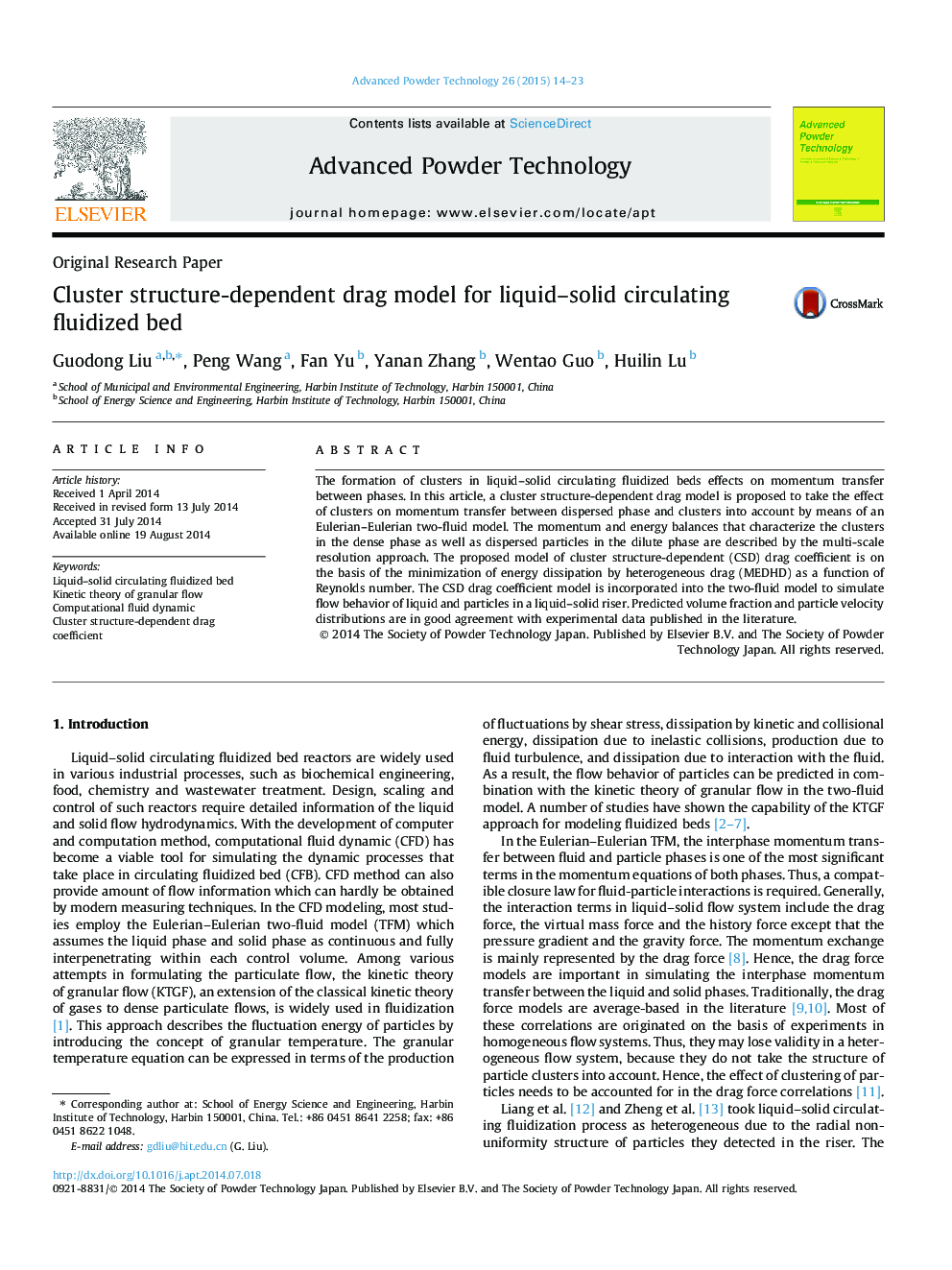| Article ID | Journal | Published Year | Pages | File Type |
|---|---|---|---|---|
| 144623 | Advanced Powder Technology | 2015 | 10 Pages |
•A cluster structure-dependent drag model is proposed to take the effect of clusters on momentum exchange into account.•The momentum and energy balances are described by the multi-scale resolution approach.•The proposed model of cluster structure-dependent drag coefficient is on the basis of the minimization of energy dissipation.
The formation of clusters in liquid–solid circulating fluidized beds effects on momentum transfer between phases. In this article, a cluster structure-dependent drag model is proposed to take the effect of clusters on momentum transfer between dispersed phase and clusters into account by means of an Eulerian–Eulerian two-fluid model. The momentum and energy balances that characterize the clusters in the dense phase as well as dispersed particles in the dilute phase are described by the multi-scale resolution approach. The proposed model of cluster structure-dependent (CSD) drag coefficient is on the basis of the minimization of energy dissipation by heterogeneous drag (MEDHD) as a function of Reynolds number. The CSD drag coefficient model is incorporated into the two-fluid model to simulate flow behavior of liquid and particles in a liquid–solid riser. Predicted volume fraction and particle velocity distributions are in good agreement with experimental data published in the literature.
Graphical abstractExperimental and simulated and time-averaged axial solids velocity.Figure optionsDownload full-size imageDownload as PowerPoint slide
